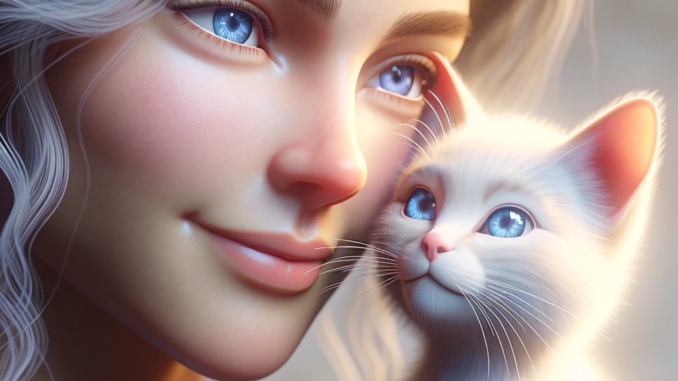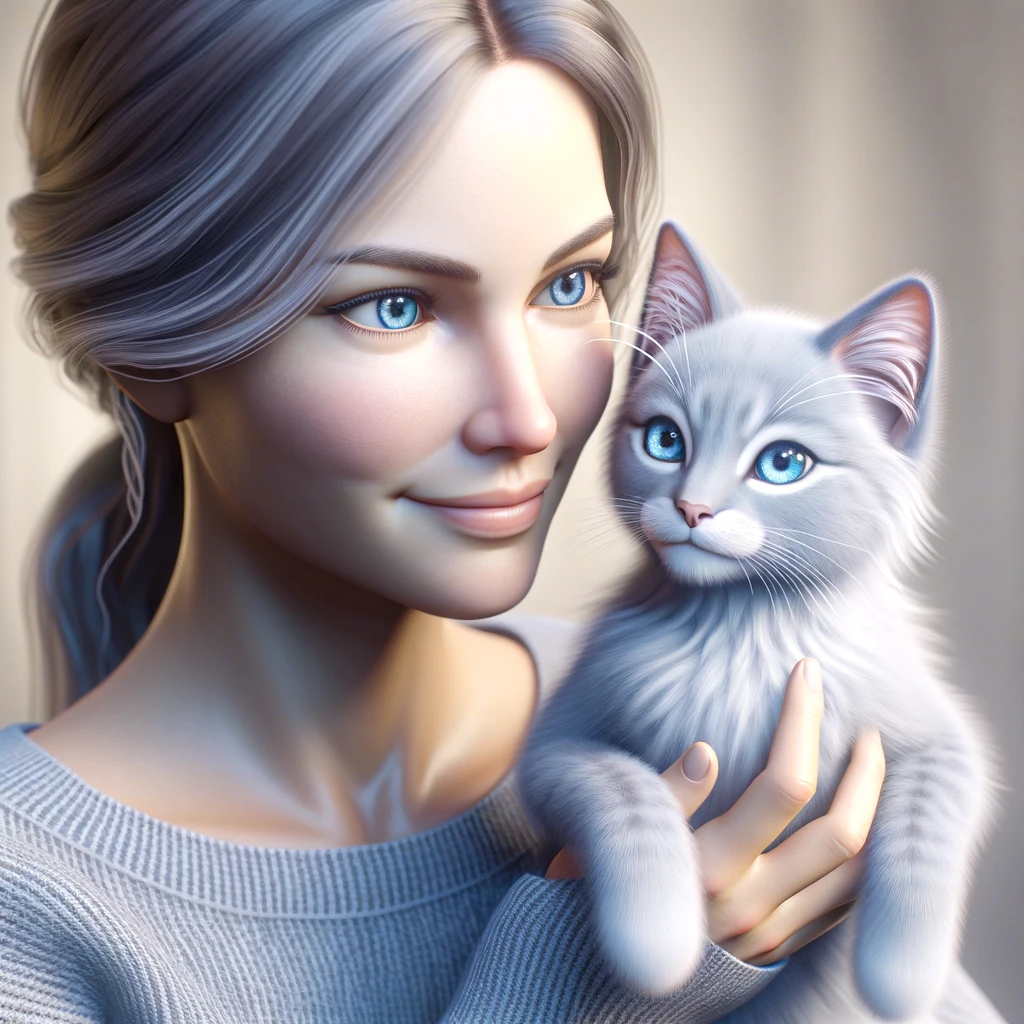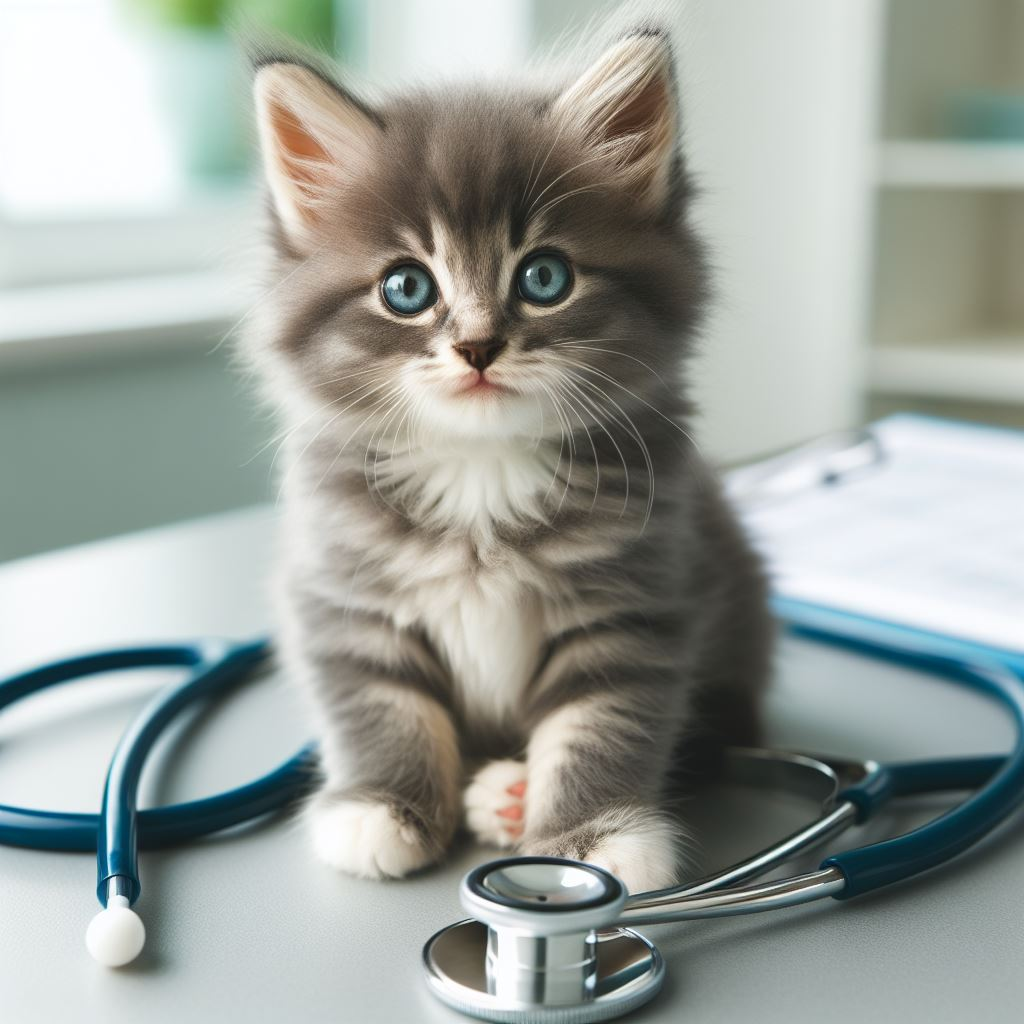
Are all Kittens Born with Blue Eyes?
Have you ever gazed into the eyes of a newborn kitten and wondered, “Why are all their eyes blue?” Well, buckle up because we’re going on an epic journey into the wonderful world of feline eye color. From the baby blues to the brilliant hues of maturity, let’s uncover some fantastic facts about why kittens have blue eyes and how their vibrant peepers evolve.
Breaking Down the Baby Blues in Kittens

“Aww, just look at those big, blue eyes!” It’s no secret that every single, adorable little kitten starts off life with captivating baby blue eyes. But what gives? Turns out, it has to do with a little something called melanin – you know, that pigment responsible for coloring your skin, hair, and eyes. Well, kittens are actually born without melanin in their eyes. *Gasp!* I know, plot twist!
So if there’s no melanin, what makes their eyes blue? Great question, my feline-loving friend! The blue color is simply the natural reflection of light as it passes through the eye. You see, blue light has the shortest wavelength, so it scatters back out when light enters the eye, giving kittens those dreamy peepers. Pretty cool, right? It’s like a natural Instagram filter for cats!
The Great Eye Color Change
Now, those gorgeous baby blues don’t stick around forever. Generally around seven weeks of age, a kitten’s eye color starts to change as the melanocytes (special color-producing cells) in their eyes mature and begin churning out melanin. The specific amount and type of melanin made ultimately determines if a kitten will have green, brown, yellow, or other hues once the transformation is complete.
“How does it work?” I imagine you asking, leaning forward curiously with hands clasped under your chin like an eager student. Well, here’s the 4-1-1: A small amount of melanin leads to light green or blue-green eyes. More melanin results in brilliant amber, copper, or yellow eyes. A large amount produces the deep, dark brown orbs many cats sport. And voilà – now you can consider yourself a kitten eye color expert!
When Kitties Keep Their Baby Blues
Now, in some breeds like Siamese, Ragdoll, and Himalayan, cats actually maintain their blue-eyed beauty even into adulthood. This magical phenomenon occurs because of a genetic connection to albinism, which leads to limited melanin production, thus keeping the dreamy blue shades. It also explains why you see a strong association between blue eyes and white or colorpoint coats. So if you have a snowy white kitty with a sapphire stare, thank their genes!
Eyes of Mature Cats: Can Colors Keep Changing?
I know what you may be thinking: “If my adult cat has brown (or green or gold) eyes now, could their color ever change again?” Short answer: Highly unlikely. Once they set their final eye shade around seven weeks old, that’s pretty much what you’ll get for the long haul.
However (dramatic pause here), certain health conditions can sometimes alter a cat’s perceived eye color. Issues like glaucoma, eye injuries, infections, and more can affect the eyes, so if Fluffy’s eyes seem to abruptly turn a different color, hustle them to the vet stat!
Predicting a Kitten’s Final Eye Destiny
“Help! Can someone tell the new cat mom over here if little Lulu’s currently grayish eyes mean she’ll stay gray or turn amber?” I can relate to the struggle of decoding kittens’ eyes, my friend. Generally speaking, kittens born super early on tend to initially have dark blue or gray peepers that may morph into baby blue or light gray later. White fur babies usually transition their child blues into permanent light blue or grayish tones. I know, confusing. But the key is that kittens’ eyes are completely functional way before their color finishes developing. So even if they look a little wonky, they’ll be A-OK!
Rarest Cat Eye Shade Revealed
If we’re talking eye color rarity, get this – brown is actually the most uncommon eye shade for felines. Kitties with brown, blue, green, and hazel peepers are relatively rare breeds. In fact, these colors are not naturally common at all. So if you spot a cat flaunting these gorgeous gems, consider yourself #blessed. You’ve witnessed an extra special sighting, my friend!
The Takeaway on Kitten Eye Color Magic
At the end of the day, witnessing the transformation of your kitten’s eyes from newborn blue to their final fabulous hue, whether green, gold, copper or something else, is truly an amazing adventure. And while genetics play a huge role in feline eye color, health, environment and more also influence this process. Understanding how it all works not only satisfies our curiosity, but helps us better care for the cats we adore so much.
So the next time you peer into your kitty’s eyes, appreciate you’re looking into the windows of their health and soul. With proper TLC and vet checkups, you’ll ensure their baby blues -or dazzling greens, ambers, and coppers – will enter you for many years to come!


Leave a Reply